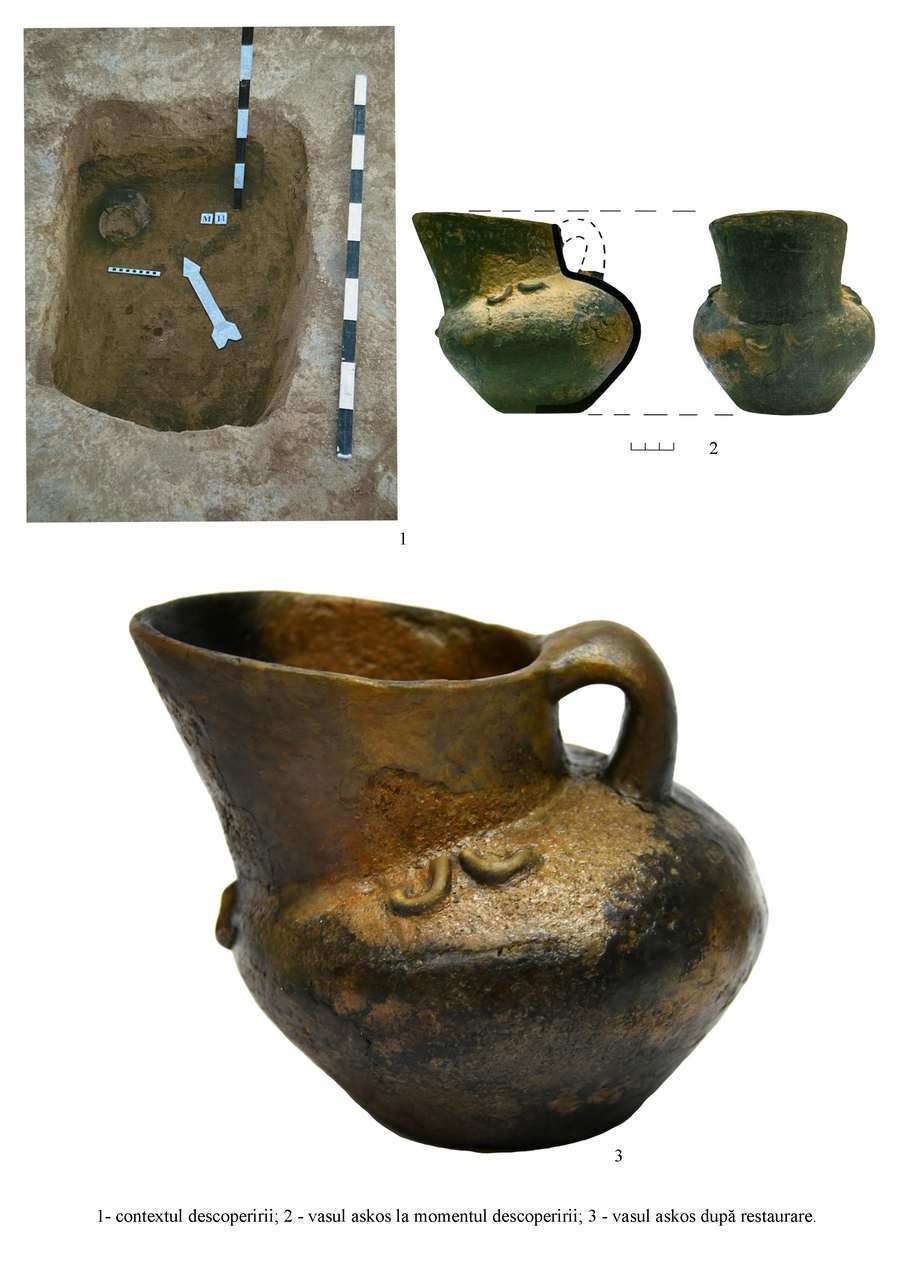  #Exhibit of the Month #Exhibit of the Month
March 2024
The „askos” type vessel from Ciumai
 The exposed object, an "askos" type ceramic vessel, comes from the tumulus necropolis near the village of Ciumai, Taraclia district. The vessel was discovered in 2015 in a cenotaph tomb attributed to the Jamnaja culture, dated to the early Bronze Age (ca. 3300-2600 BC).
The exposed object, an "askos" type ceramic vessel, comes from the tumulus necropolis near the village of Ciumai, Taraclia district. The vessel was discovered in 2015 in a cenotaph tomb attributed to the Jamnaja culture, dated to the early Bronze Age (ca. 3300-2600 BC). The vessel, with an obviously asymmetrical configuration, is hand-moulded from quality clay paste, having a smooth brown surface with gray spots. The body of the vessel is provided with a pronounced protrusion and a truncated neck with a wider opening towards the mouth. The vessel has a stem and is ornamented with three pairs of symmetrically placed relief appliqués. The height of the bowl is 15.5 cm, the diameter of the mouth is 11.4 cm, the diameter of the body is 15 cm and the diameter of the base is 7.5 cm. Such vessels in the archaeological literature are known as "askos" vessels, the respective term being of ancient Greek origin, denoting one of the primitive containers of the period - the bellows made of animal skin. In prehistoric times, among some peoples, the bellows was transposed into ceramics, in these cases the basic features of the archaic leather vessel were preserved, acquiring a prominent convex shape with a stem and a flat bottom. From the original appearance of the bellows, the asymmetric mouth corresponding to the animal's neck has been preserved, and sometimes three or four legs, corresponding to the appendages of the flayed skin from the animal's legs. These vessels have lost their original zoomorphic character, entering as a new form in the inventory of Neo-Eneolithic ceramics. The first vessels of this type are attested in Greece, in the early Neolithic (ca. 5000-4500 BC) having the shape of cups or cups. In the Neo-Eneolithic Carpatho-Balkan cultures, the type of Aegean askos of short or tall form, with or without legs and with a handle, is found. Less often, they are provided with two mouths (one for filling and one for emptying) or they are off-center and provided with strangely shaped mouths. In the space between the Carpathians and the Dnieper, only tall forms of simple askos, without zoomorphic elements, are known. Askos-type vessels are present in various prehistoric cultures, especially in Southeast Europe and Anatolia. Being often discovered in association with cult inventory, askos vessels could be an important indicator of use in religious ritual practices. Along with the zoomorphic, anthropomorphic and rhyton-type vessels (roughly conical container from which, in some ceremonies, liquids were drunk or poured), the askos were included in the category of vessels intended for worship, being related to libations (ritual act that consisted of tasting and then pouring a cup of wine, milk, etc. as homage to the deity).
|

















































